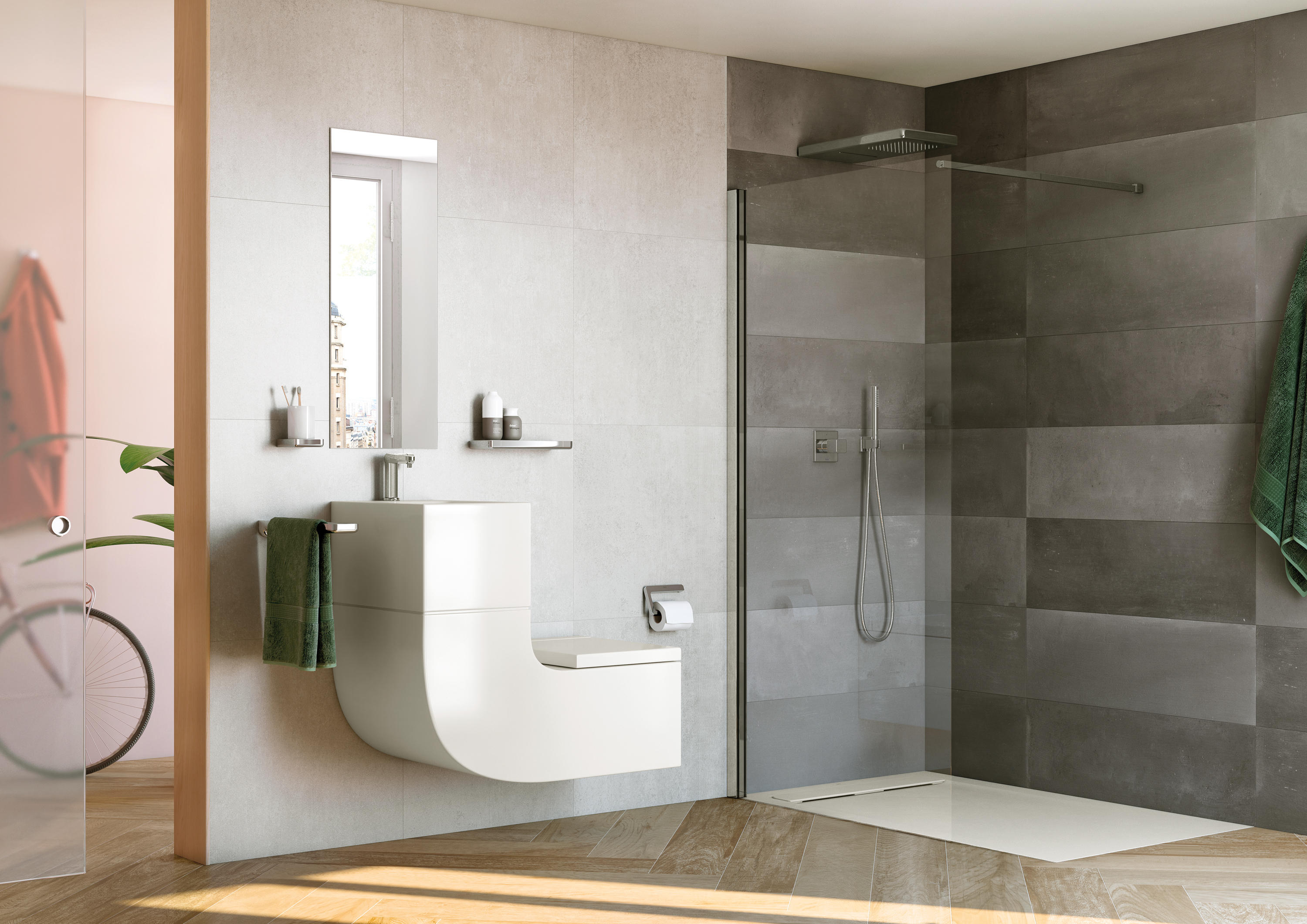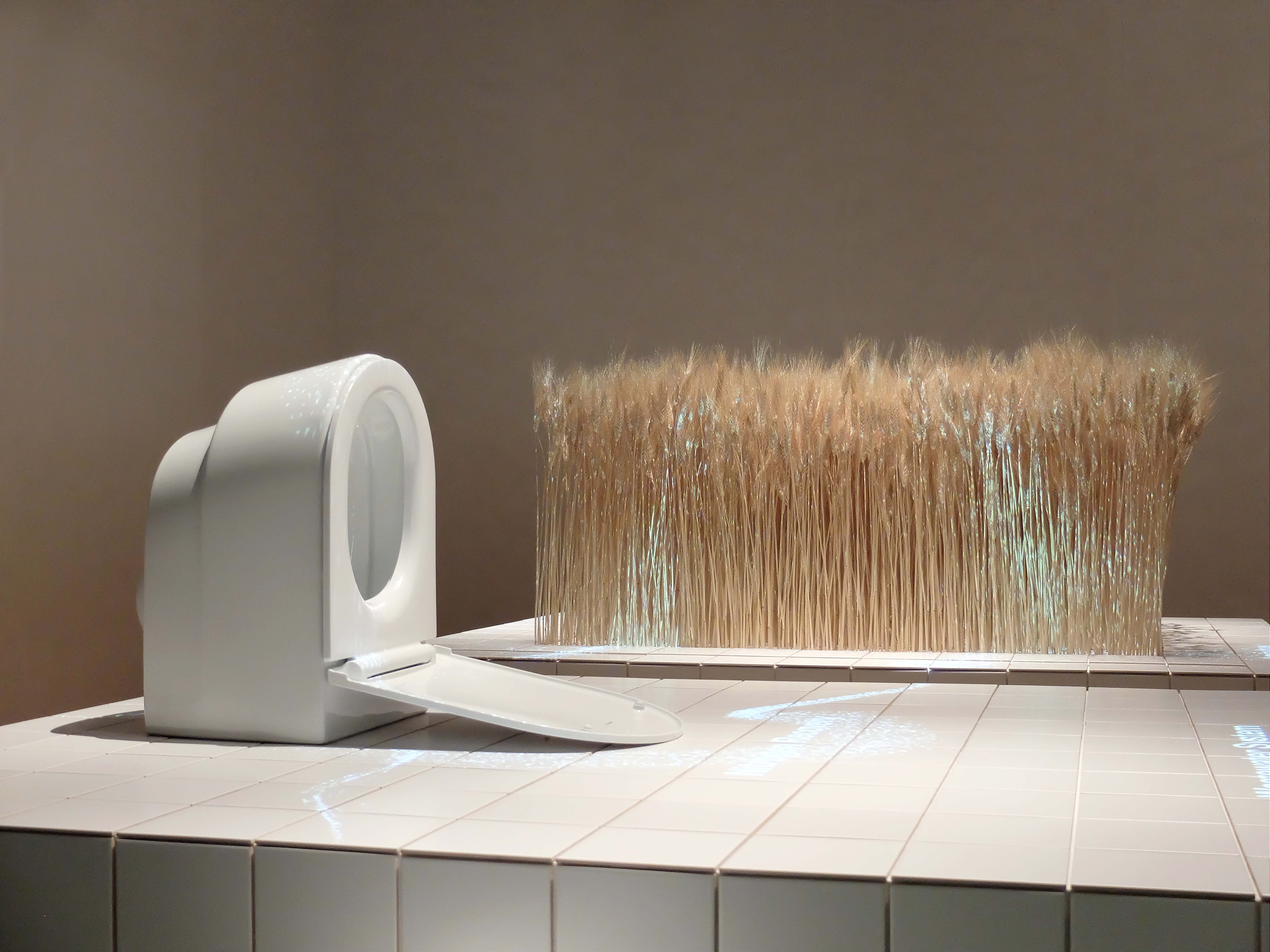Five to twelve? No. More like on the stroke of twelve. When dealing with water, and reducing it in particular, discipline is a must. Though many initiatives to reduce our use of water are already becoming more apparent within the sanitary industry, there is still much, much more to be done.

A piece of personal responsibility: Dornbracht puts the decision in the hands of the user with its intelligent tools for water choreographies.
© Photo: Dornbracht
Though the solutions in the face of climate change can be many, they all arise from one common fact: the challenges that we are faced with as a planet and species are immense—a notion that has only been reinforced by the COVID-19 outbreak that has wreaked havoc across the globe since the onset of 2020. With the world coming to a halt for a brief moment, many environmental advocates argue that time has come to fundamentally rethink how we inhabit our planet as a population and the challenges that need rethinking are manyfold: the impending risk of overpopulation and increasing urbanization that leads to a scarcity in both space and resources, advancing climate change that can potentially spiral into, in the worst case, collapse of our economic and ecological systems and a social gap that in many countries seems to be increasingly widening. However, nobility and beauty often find their way through the cracks in times of duress with the given risks prompting us to think and work in new ways.

Invisible efficiency: Hansgrohe's Eco-Smart technology can save up to 60 percent of water used by adding air.
© Photo: Hansgrohe
One thing that is common to all countries around the world is our consumption of water and how we can minimize this. When the rivers run out of water due to more frequent drought and lack of rain and snowfall, the oh-so-wonderful hydroelectric power will also come to an end. The alternatives will then be forests of wind turbines and entire areas of land full of solar cells, because we will have more sunshine and wind than we actually need. For many years now, the sanitary industry has been coming up with good and, above all, feasible ideas that can reduce water consumption in everyday life; the most widespread initiative being the well-known economy buttons on toilet flushes and faucets that can offer the same water functionality with less water used. But that is only part of the story. The problem is often that we, as users, aren't using the tools properly. After all, how often is the big button pressed in the toilet—after the "small business" has been conducted—rather than the small button? How often is the water left running when we find ourselves shaving and brushing our teeth? Thus, the functionalities offered by the producer and the requirements needed from the user must be one and the same.

Two in one: at Roca's W+W, the water from the sink is collected for the next toilet flush.
© Photo: Roca

Waterless urinals, like these extraordinary eye-catchers from Senza Aqua, make a valuable contribution to saving water.
© Photo: Senza Aqua
As it stands, toilets are where most of the water-saving potential lies with waterless urinals being an apparent first step toward not wasting valuable drinking water on flushing toilets. But there are quite different, visionary concepts that can produce something special even from what people have left behind, such as the "save!" toilet concept: an innovative material separation toilet developed for the Bill & Melinda Gates Foundation through years of research by the Swiss Eawag, the water research institute of the ETH Domain, under the direction of environmental engineer Tove Larsen. The Viennese design trio EOOS is responsible for the design as well as the development of the Urine Trap. At its core, the Urine Trap, allows urine to be inconspicuously separated into its own wastewater stream to be used to produce fertilizer.

More than just a toilet: the urine separation toilet save! from Laufen contributes to the protection of rivers and seas.
© Photo: EOOS
Already, the concept of save! is so mature that it meets the latest industry standards, passively separating urine from feces and flush water so that it can subsequently be rapidly, easily and biologically processed using backend systems such as that of Vuna, an Eawag spin-off. Nutrients can thus be recovered by processes involving biological stabilization, activated carbon filtration and evaporation, which convert urine separated in the toilet into the fertilizer concentrate of Aurin. This has been approved by the Swiss Federal Office for Agriculture for use on all crops. Thus, what was initially just a revolution has already gone into serial production. Tove Larsen, a specialist in urban water management, ends: "Separate wastewater management systems are crucial, particularly for fast-growing metropolitan areas, to prevent catastrophic damage to rivers and oceans. Save! represents a breakthrough in effective and hygienic wastewater separation, ultimately providing the sanitation solution for the 21st century."
Originally written by Barbara Jahn